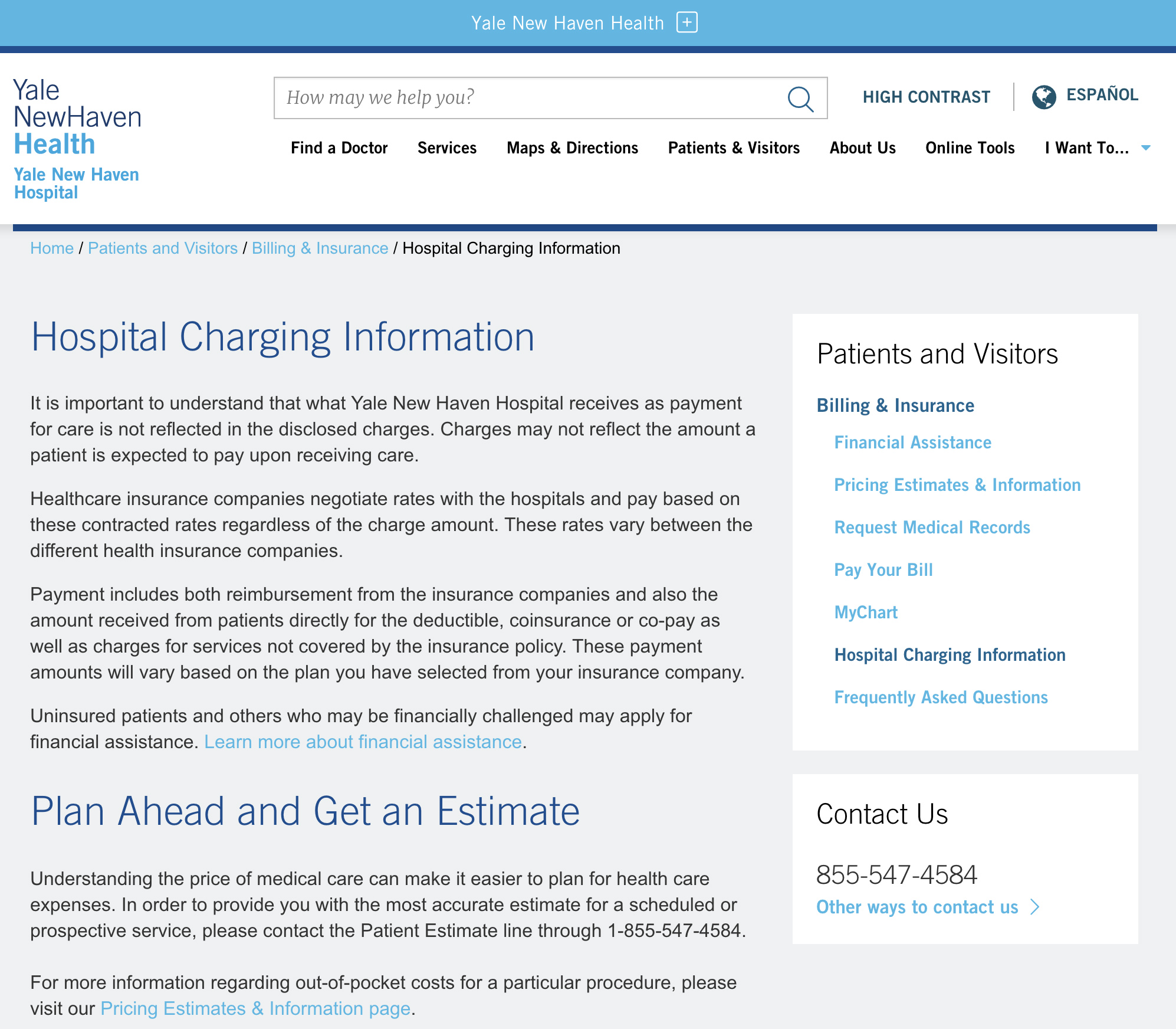
As of the new year, Yale New Haven Hospital’s prices are available online as part of the federal government’s effort to increase hospital price transparency.
In April, the Centers for Medicare and Medicaid Services, also known as CMS, drafted a new policy effective Jan. 1 that required all U.S. hospitals to publish their chargemaster — a comprehensive list of all hospital items billable to the patient or to their insurance provider. The move is intended to help patients better understand hospital prices.
“America’s healthcare system has to change, and President Trump’s Administration recognizes that,” said the U.S. Department of Health and Human Services Secretary Alex Azar in an April press release. “This payment proposal takes important steps toward a Medicare system that puts patients in charge of their care and allows them to receive the quality and price information needed to drive competition and increase value.”
Yale New Haven Hospital’s chargemaster is accessible online from their website’s “Billing and Insurance” section under the “Hospital Charging Information” tab. The downloadable file contains over 65,000 different items with their prices. The listings range from a $0.20 catheter to a nearly $50,000 pacemaker.
But the reality of hospital billing is not so simple. The Yale New Haven Hospital website states that these charges do not reflect what patients will actually pay for these items, and Yale’s health care policy experts said that patients should not take these listed charges at face value.
Mark Schlesinger, the School of Public Health’s Chair of Health Policy and Management, called the new CMS policy a simplistic solution to a complex issue. There is no single price for hospital items: Insurance discounts or other income accommodations made by the hospital dictate reductions to the price listed online.
“The problem is that there are no such thing as [hospital] prices in the same way that there are prices when you go to the store and it says, ‘Gallon of milk $1.49,” Schlesinger said.
The chargemaster reflects the full retail price of hospital items before any deductions are applied, said Howard Forman, the director of the School of Public Health’s Health Care Management Program. Only uninsured wealthy patients would pay close to the listed price for hospital items.
“The chargemaster that hospitals use is almost meaningless in terms of what the actual price that is paid by the consumer and certainly by the insured consumer is,” Forman said. “The charges that are posted are sort of a fictitious number.”
Yale New Haven Hospital representatives were not available for comment.
Hospitals would have to list each billable item numerous times with different prices in order to reflect the breadth of possible health insurance discounts. Schlesinger said that a procedure as basic as an MRI could require up to 150 different prices listed on the chargemaster to accurately account for different insurance policies. He called it “impossibly impractical” to list all prices for each item a hospital is able to bill, unless programs are designed to better comb and organize this data.
The chargemaster does not include every possible item that could appear on a patient’s bill. Because the new CMS policy only requires that hospitals list prices for their own items, procedures and consultations from health care providers such as specialists, surgeons and anesthesiologists are not published with the chargemaster online.
“People care about what kind of medical care [they are] getting and how much it is going to cost [them] — not what prices are,” Schlesinger said. “The prices are only part of the equation.”
Both Schlesinger and Forman said that the CMS policy is a step in the right direction to make hospital prices more transparent. But Forman argued that the change will not have a meaningful impact because the numbers do not have bearing on what a patient will actually end up paying. He suggested that hospitals should fully disclose rates that they charge insurance companies and methods for reducing bill amounts for low-income uninsured patients. Forman added that hospitals could take responsibility for overall costs of care, rather than just hospital charges.
The Centers for Medicare and Medicaid Services was established in 1965.
Marisa Peryer | marisa.peryer@yale.edu







